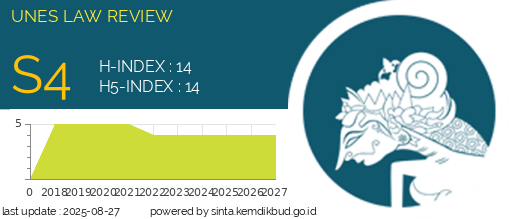SPEECH PERCEPTION BUNYI KONSONAN PADA PEMBELAJAR BAHASA JEPANG BERBAHASA IBU JAWA MANCANEGARI
DOI:
https://doi.org/10.31933/unesrev.v5i4.585Keywords:
Speech perception, consonants, Frequency, Pitch-accent, JavaneseAbstract
Problems with pronunciation and accent in Japanese language learners often occur because learners have different mother tongues. This study aims to describe how the form of perception of consonant utterances in Japanese language learners whose native Javanese language is foreign when compared to native Japanese. The consonants that will be test are Japanese plosives and fricatives. The method used in this research is descriptive qualitative where the researcher will describe the results of data analysis and explain facts about perceptions of mother tongue speech, which interfere with foreign language learners, especially Japanese. The analysis was carried out based on the recording when testing words containing plosive and fricative consonants. Based on the results of the analyze in this study, it can be interpreted that Japanese language learners whose mother tongue is Javanese Mancanegari have differences from native Japanese speakers, both in terms of the frequency of the spoken consonants and in terms of the pitch-accent waves
Downloads
References
Best, C. T. (1995). A direct realist view of cross-language speech perception. In W. Strange (Ed.), Speech perception and linguistic experience: Issues in cross-language research (pp. 171-204). Baltimore, MD: York Press.
Boersma, P., & Heuven, V. V. (2001). Speak and UnSpeak with Praat. Glot International, 5, 341-347.
Chaer, A. (2003). Linguistik Umum. Jakarta: Rineka Cipta.
Giriko, M. (2016). Japanese Accent and Its Regulairty. Japanese Studies Journal, 13, 6-20.
Hernawati, H. (2018). Analisis Persepsi Terhadap Bunyi Frikatif Bahasa Jepang [s, z, ɕ, ʑ] pada Pembelajar Bahasa Jepang yang Berbahasa Ibu Bahasa Jawa. Japanese Research on Linguistics, Literature and Culture, 1(1), 16-27.
Himeno, T., Komori, K., & Yanagisawa, E. (2015). Nihongo kyouikugaku nyuumon. Japan: kenkyuusha.
Koentjaraningrat. (1984). Kebudayaan Jawa. Jakarta: PN Balai Pustaka.
Lotto, A. J., & Holt, L. L. (2016). Speech Perception: The View from the Auditory System. Neurobiology of Language (pp. 185-194). Elvesier Inc.
Matsuzaki, Hiroshi & Kawano, Toshiyuki. (2022). Nihongo kyoiku yoku wakaru onsei. Tokyo: Aruku.
McRoberts, G. W. (2020). Speech Perception. In H. Laboratories, Encyclopedia of Infant and Early Childhood Development, 2nd Edition, Volume 3 (pp. 267-277). New Heaven: Elsevier Inc.
Polka, L. (1992). Characterizing the influences of native language experience on adult speech perception. Perception & Psychophysics, 52(1), 37-52.
Rachmawati, D., & Diharti, S. (2022). Gugus Konsonan Bahasa Jawa Dialek Surabaya. Jurnal IDEAS, 8(4), 1511-1520.
Sugiyono. (2016). Metode Penelitian Kuantitatif, Kualitatif dan R&D. Bandung: PT Alfabet.
Sutedi, D. (2003). Dasar - Dasar Linguistik Bahasa Jepang. Bandung: Humaniora.
Vance, T. (2008). The Sounds of Japanese. New York: Cambridge University Press.
Walgito, B. (2010). Pengantar Psikologi Umum. Yogyakarta: C.V Andi.
Williams, D., & Escudero, P. (2014). Native and Non-Native Speech Perception. Acoustics Australia, 42(2), 79-83.
鄭,賢.(2003).日本語のアクセント体系.日本語・日本文化研修プログラム研修レポート集, 17, 18-33. Retrieved from https://ir.lib.hiroshima-u.ac.jp/00038873
Downloads
Published
How to Cite
Issue
Section
License
Hak cipta :
Penulis yang mempublikasikan manuskripnya di jurnal ini menyetujui ketentuan berikut:
- Hak cipta pada setiap artikel adalah milik penulis.
- Penulis mengakui bahwa UNES Law Review berhak menjadi yang pertama menerbitkan dengan lisensi Creative Commons Attribution 4.0 International (Attribution 4.0 International CC BY 4.0) .
- Penulis dapat mengirimkan artikel secara terpisah, mengatur distribusi non-eksklusif manuskrip yang telah diterbitkan dalam jurnal ini ke versi lain (misalnya, dikirim ke repositori institusi penulis, publikasi ke dalam buku, dll.), dengan mengakui bahwa manuskrip telah diterbitkan pertama kali di Jurnal UNES Law Review.



















